Thoroughly Uninstall MiniTool Mac Data Recovery for Mac
Encounter problems when trying to uninstall MiniTool Mac Data Recovery for Mac? Unable to sweep out app leftovers by performing standard uninstall? You could read through this tutorial to know how to properly remove unwanted apps on your Mac.
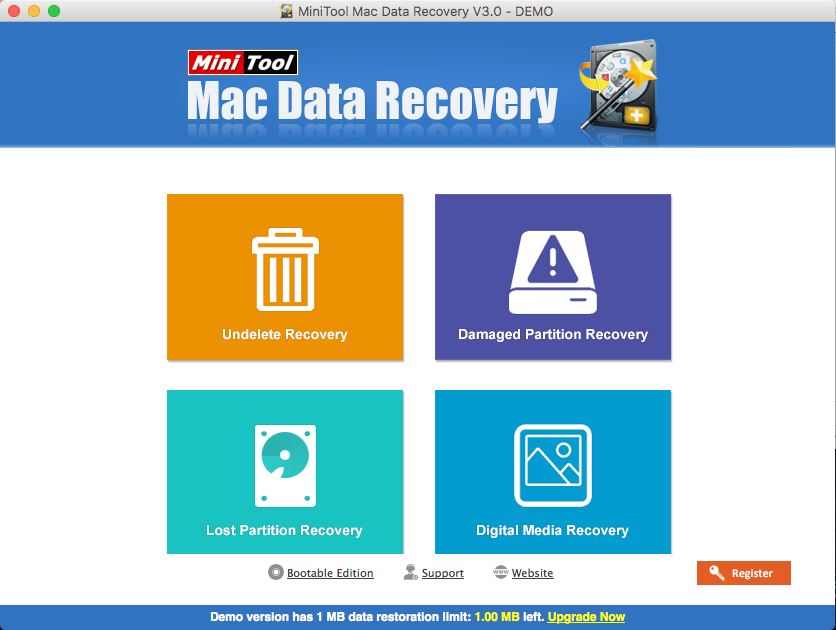
MiniTool Mac Data Recovery: a free application designed for macOS/Mac OS X that helps recover lost, deleted, or corrupted data like documents, photos, music, videos and emails. Yet it is only effective when the data you want to recover is no more than 1GB, and when there is no physical damage in the drive you recover from. Given that there are many competing alternatives to this app, you can uninstall MiniTool Mac Data Recovery from your Mac device if you are not satisfied with its performance.
Now here is the topic of this article: How can I fully remove MiniTool Mac Data Recovery without any trace left? If you perform the uninstall simply by the drag-to-drop method, the app itself can be removed from the Finder, yet some of its components still remain and therefore occupy certain space on your disk. The post offer two different approaches to help you get rid of MiniTool Mac Data Recovery effectively. You can choose either of them to carry out any Mac app removal.
Perfect Way to Remove MiniTool Mac Data Recovery
Wonder if there is a convenient and hassle-free way to perform the uninstall? Sure! Whether you have trouble in uninstalling MiniTool Mac Data Recovery, or you just want to save some time in this task, we highly suggest you to run an automated uninstaller to easily remove all unwanted apps. Osx Uninstaller is a lightweight yet powerful utility that helps all level users to perfectly remove any problematic, stubborn or malicious app on Mac. To effectively uninstall MiniTool Mac Data Recovery for Mac, you just need to do 3 simple steps: launch > select > uninstall.
First of all, take a brief look at this clip to know how Osx Uninstaller works:
So here are the simple steps you can follow to remove MiniTool Mac Data Recovery:
1. Quit MiniTool Mac Data Recovery if it is running, and then launch Osx Uninstaller.
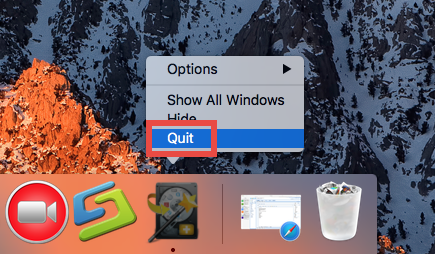
2. Select MiniTool Mac Data Recovery in the interface, and then click Run Analysis.
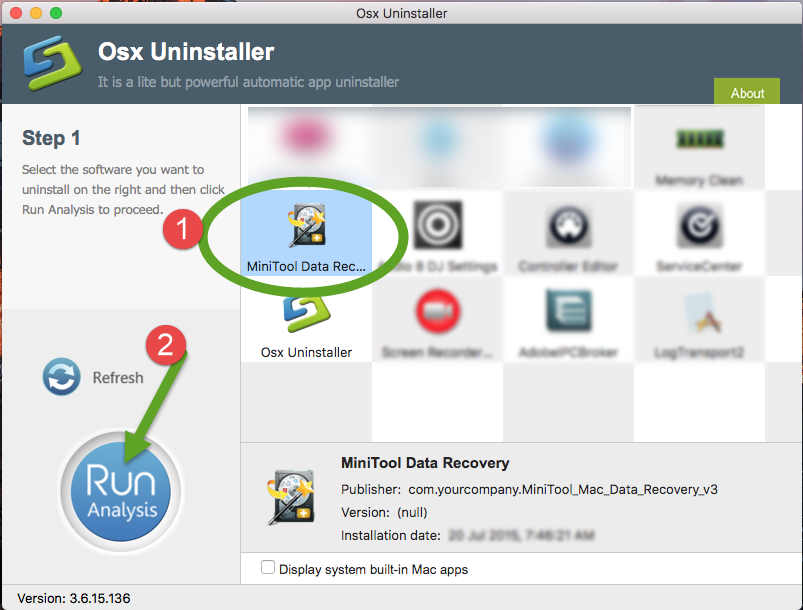
3. Review the app components that are scanned out from your system, click Complete Uninstall and then Yes in the pop-up dialog box to perform a thorough uninstall.
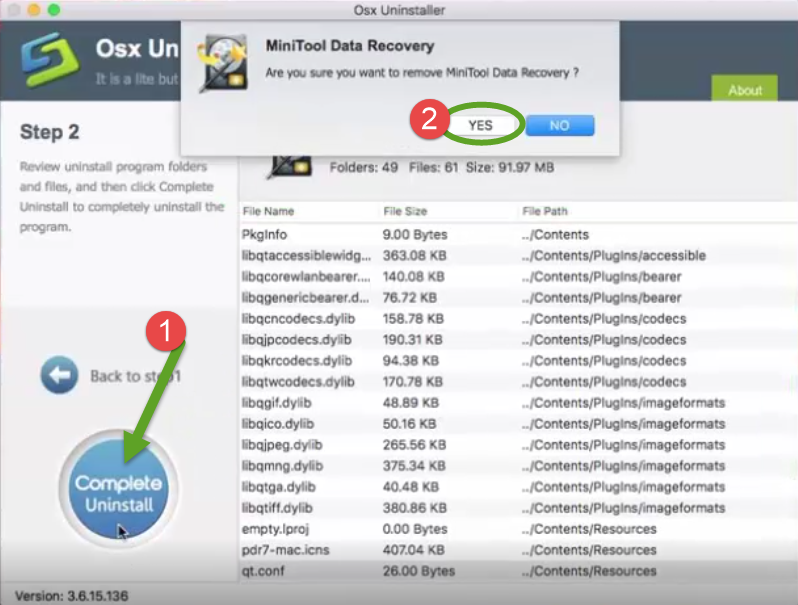
4. Once the removal is complete, click Back to Interface button to re-scan your Mac.

Osx Uninstaller enables Mac users to entirely uninstall MiniTool Mac Data Recovery as well as other unwanted apps without causing any trouble. The next time you fail to uninstall an app, just give it a try, and you’ll love the convenience it brings.
Manually Uninstall MiniTool Mac Data Recovery for Mac
A handy uninstaller could save you much time and trouble in deleting apps on Mac. But if you persist in uninstalling MiniTool Mac Data Recovery without using 3rd party, you can take the conventional method to perform the removal. Please follow the next steps to delete MiniTool Mac Data Recovery and all its components from your Mac.
Step 1. quit MiniTool Mac Data Recovery
Before the uninstall, you should deactivate all the processes related to MiniTool Mac Data Recovery, otherwise you might fail to uninstall all its components. If the app is running, head to the [app name] in the Menu bar and then choose Quit option. Alternatively, you can right click its icon on the Dock and choose Quit option.

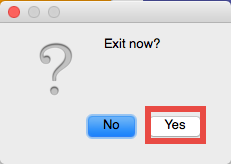
Cannot quit an app by aforementioned options? Try Force Quit in Activity Monitor:
- Open up the Activity Monitor from the Dock, Launchpad, or Spotlight.
- Select the process with the name of MiniTool Mac Data Recovery, click the Quit Process icon in the left corner of the window, and then choose Force Quit in the poop-up dialog.
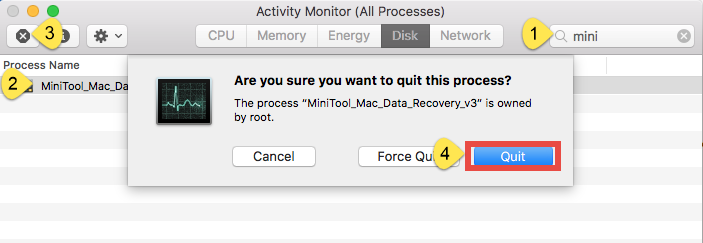
Step 2. uninstall MiniTool Mac Data Recovery
Now make sure that you have logged into with an administrator account, and you might be asked for the password when you try to delete something in the Finder.
- Open the Finder and head to the Applications folder through the left panel.
- Select and drag the icon of MiniTool Mac Data Recovery to the Trash in the dock.
- When prompted, type your administrator password in the confirmation dialog.
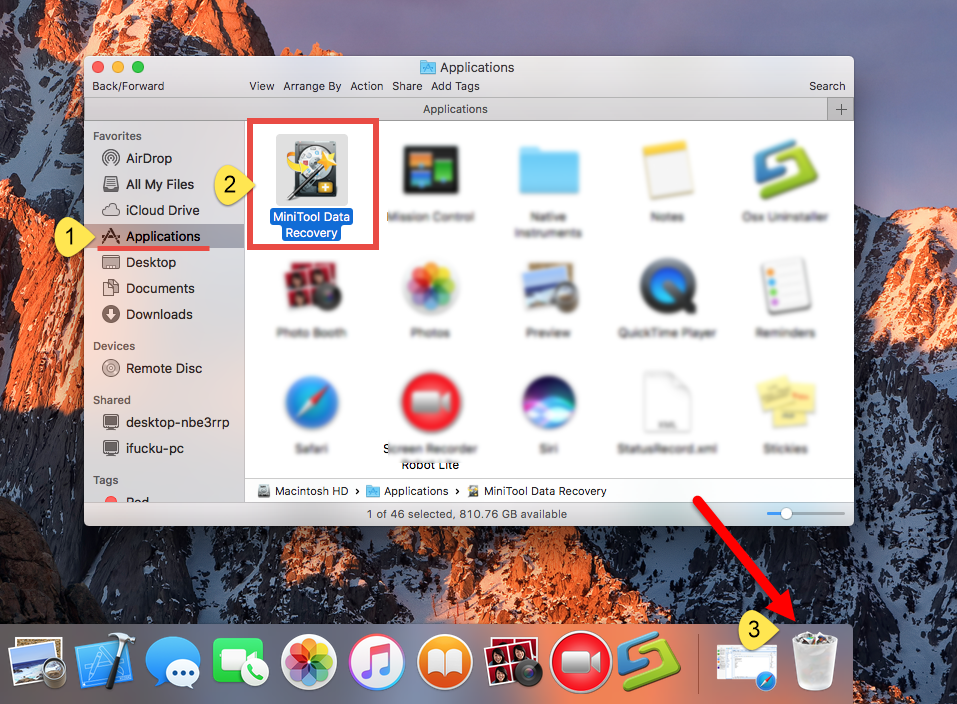
Also, you can uninstall an app by these options: right click on the app icon > choose Move to Trash; select the app > click on File menu > choose Move to Trash.
The drag-and-drop move is the universal method to uninstall apps in all versions of Mac OS X. Generally, the app you choose have been removed from sight, but to perform the uninstall you will need to empty the Trash. If you fail to move the app to the trash, try to reboot your Mac into Safe Mode and repeat the steps again.
Step 3. detect associated items on system
Even for Mac apps, they typically create items like preference, cache and support files on system disk during the first setup and daily usage. If you no longer use MiniTool Mac Data Recovery, you’d better delete all invalid components to ensure a clean uninstall and also reclaim the disk space. Here’s how to detect an app’s leftovers:
- Open the Finder, click the “Go” from the Menu Bar, and select Go to Folder…
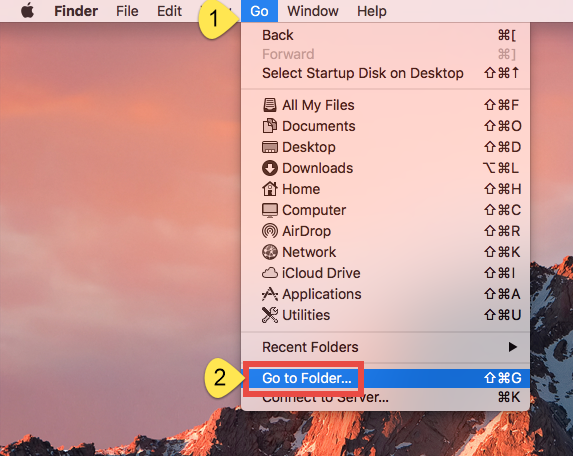
- Type the path of the top level Library on hard disk: /Library, and hit Enter key.

- Search for the files or folders which contains the name of target app or the vendor in the following locations and delete the matched items: /Library, /Library/Caches, /Library/Preferences, /Library/Application Support, /Library/LaunchAgents, /Library/LaunchDaemons, /Library/PreferencePanes, /Library/StartupItems
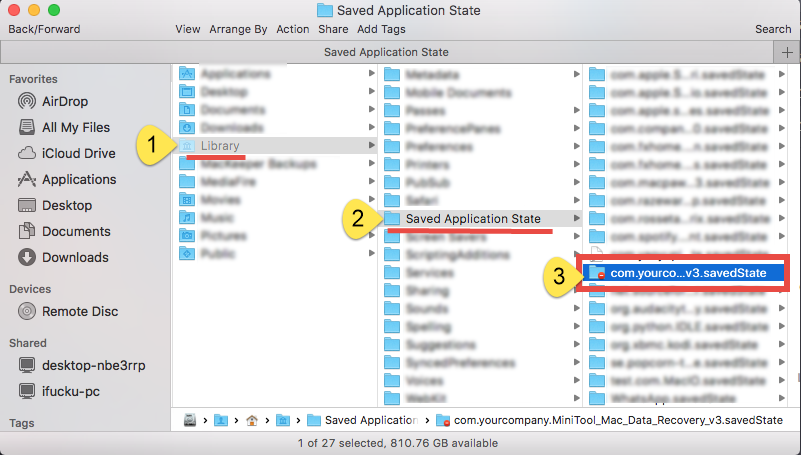
Warming: deleting the wrong items from Library could do harm to your other apps or even system, so make sure to be very careful what you try to delete. Meanwhile, it could be time-wasting going through each folder and searching for app leftovers. Luckily, you can make use of the Search in Finder to hunt down associated files.
- Go ahead to open up the user library inside home folder: ~/Library.
- Type the name of target app or its vendor in the Search Bar, and click on Library.
- Identify the matched items, right click on them and choose Move to Trash option.
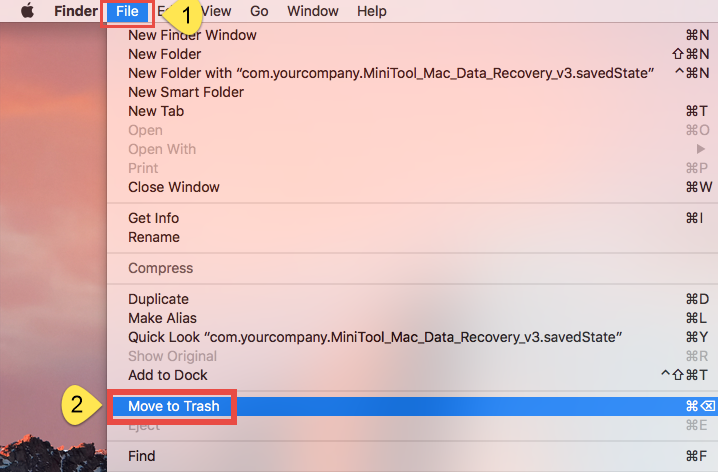
If there are still some files you fail to locate or identify, do a web search about the app components. Besides, advanced users can utilize the Terminal (located in Utilities folder) to list the contents of the directory in question and then delete offending items.
Step 4. empty the Trash (with caution)
After moving all associated items to the Trash, you can carry out the last step – emptying the trash. Notice: the act is irrevocable, and everything in the Trash will be deleted immediately, so be very cautious when you are performing this part.
- Right click on the Trash icon in the dock.
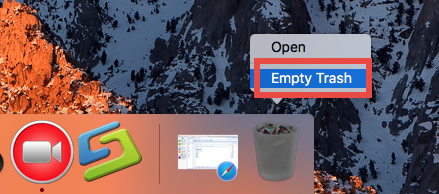
- Choose Empty Trash and click OK in the pop-up dialog.

Have you successfully removed MiniTool Mac Data Recovery and its vestiges? Which method do you prefer to use in handling Mac app uninstallation? Is this post helpful for you? Welcome to share your suggestion or comment with us right here.
Run into issues when trying to uninstall other apps? Feel free to contact us for help.


 $29.95/lifetime
$29.95/lifetime